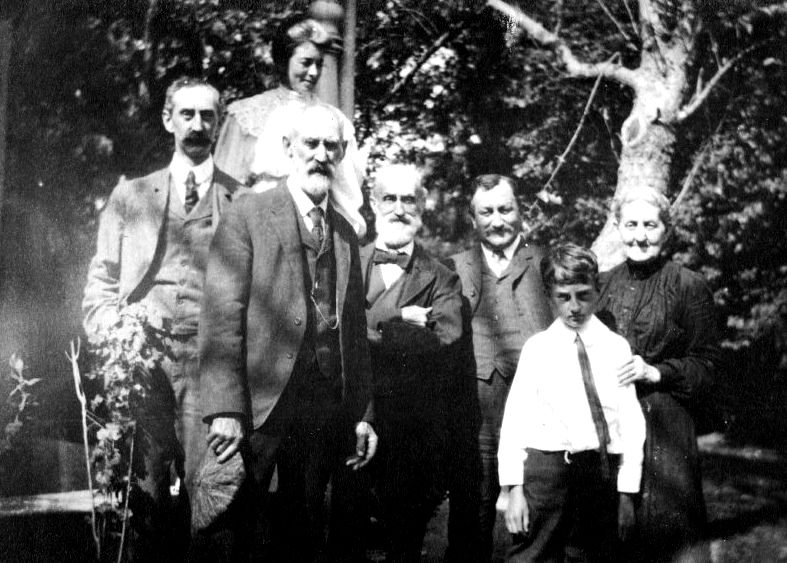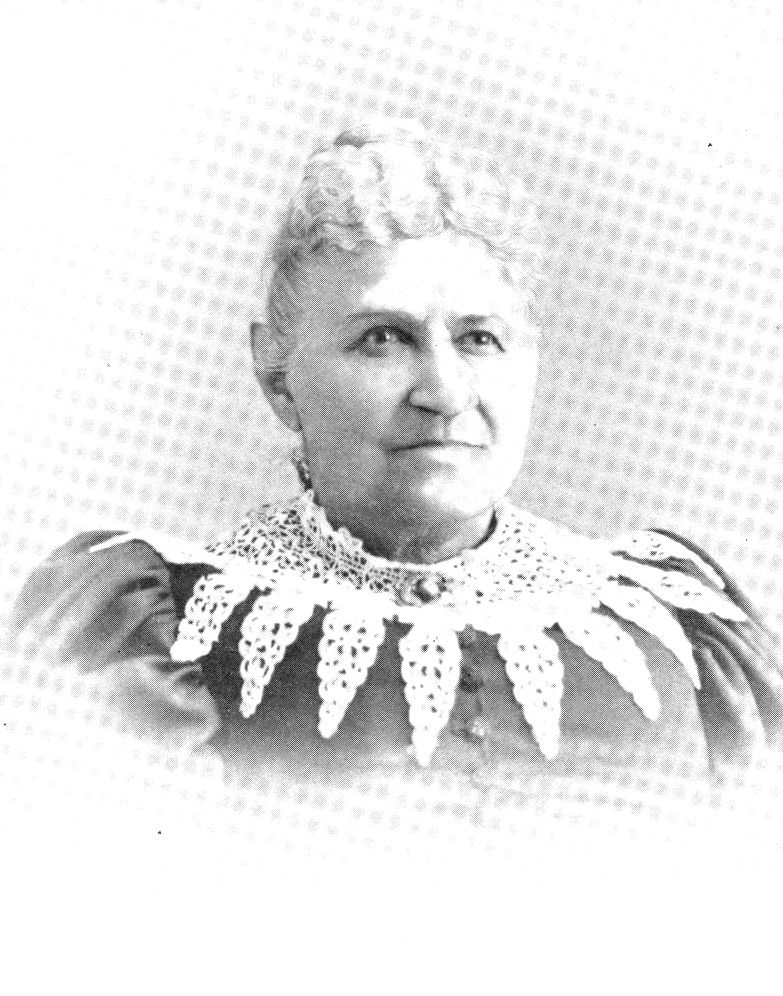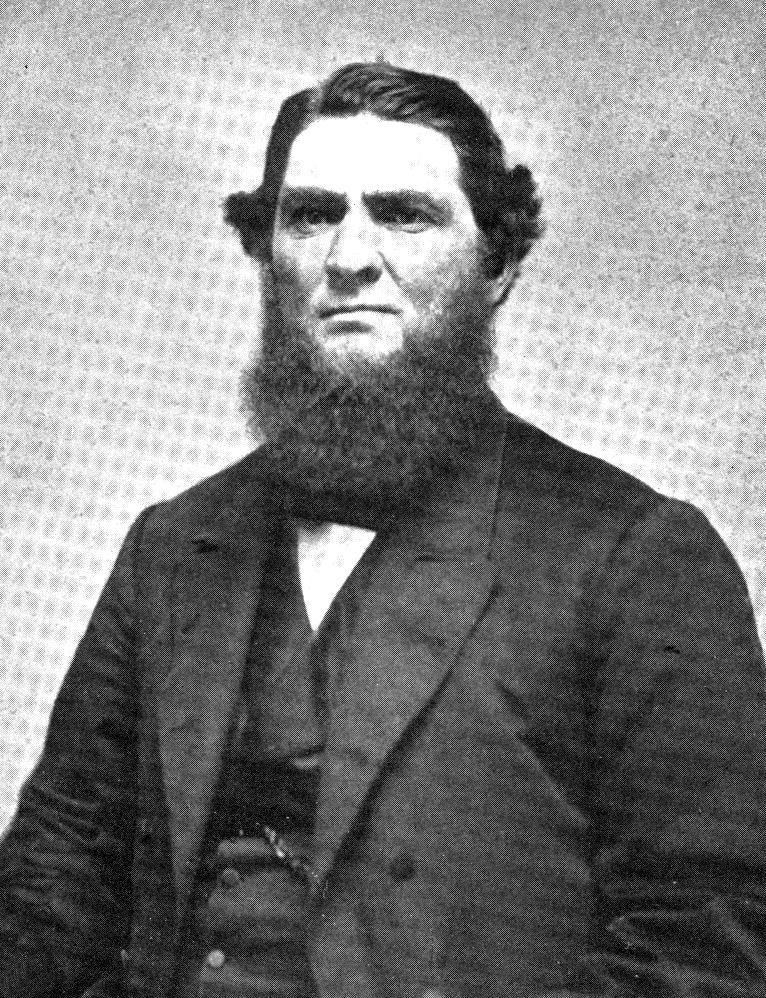Southampton's Whaling Captains
- Connor Flanagan

- Jul 28, 2020
- 10 min read
Updated: Aug 26, 2022
In 2017 we had an exhibit called Hunting the Whale: The Rise and Fall of a Southampton Industry which highlighted the story of a handful of whaling Captains that lived in Southampton and told the story of how Southampton participated in the whaling industry. Below is a look back at some of those people who were talked about in the exhibit. Enjoy!

Capt. Austin Herrick, 1796 - 1862

Lived at 17 North Main Street in Southampton Village
Whaling lore is full of tales of shipwrecks--the travails of those who survived, the terrible fate of those who perished at sea. One of the most intriguing of these stories was first told in a book titled “Historic Long Island,” which was published in 1902 and would seem to refer to Austin Herrick of Southampton. Though records of dates and boats he sailed on have eluded researchers, Herrick was often referred to in published accounts as an esteemed whaling captain. There are records of his birth in 1796, his marriage in 1835 and it is known that he lived at 17 North Main Street where he also ran a store. Other documents, including a letter and a log book bear his signature—all of which, with the timing of the events, lend credence to the theory that the hero of this romantic narrative is Austin Herrick. The author is persuasive in writing of the young seaman’s infatuation with a certain “picturesque, gambrel-roofed structure” on North Main Street and with a “certain maiden of Southampton.” Neither house nor maiden being available to him at the time, he sailed off to sea vowing to have both on his return, which was, alas, much delayed by the wreck of his vessel off the coast of Brazil. An arduous trek through the Brazilian forests to Rio de Janeiro, a successful attempt at stowing away on a ship to America, and our hero arrives home in Southampton at last. The maiden falls into his arms, the house is his, and Austin Herrick (can anyone doubt it is he?)--a man who has had enough adventure to last a lifetime-- settles down on North Main Street as a happy husband and storekeeper.
Capt. Barney Green, 1834/5 - 1902

Lived on South Main Street in Southampton Village
Barney came from a huge whaling family that intermarried with other whaling families. For example, he was the son of Aaron and Ann (Nickerson) Green and his father’s sister married Capt. Mercator Cooper. At the young age of 8 he went on his first whaling voyage as cabin boy with his brother-in-law Captain Henry Edwards on the “Whaleship Fannie.” He was known to be “a jolly little lad, always good natured, always happy.” This began his career upon the water covering 30 years during which he made at least 8 voyages, sailed twice around the world, visited every ocean and called at every large port of note. On his last voyage, he was badly hurt when his boat was stove by a whale and he was hurled into the air and fell upon the loggerhead. His comrades did not think he would survive his serious injuries, but he did. He returned from this voyage and never shipped out again. Green and his wife, Eliza J. Hildreth, were smart enough to change with the times after Barney’s whaling carreer came to an end. In 1890 he became the first official chief of the Southampton Fire Department and towards the end of his life, when Southampton was becoming a famed resort town, he built a new larger house and took in boarders.
Capt. Mercator Cooper, 1803/4 - 1872

Lived on Windmill Lane in Southampton Village
A captain of great dash and courage, Mercator Cooper was one of the most renowned seamen of his day. At the time of his death, the New York Herald noted that “from his youth he was bred to the sea and for more than 30 years held the responsible position of commander of vessels of large tonnage…and made extensive whaling voyages in the Northern and Southern Oceans.” His most famous exploit was the historic visit of his ship the Manhattan to feudal Japan in 1845. Arriving in Japanese waters to deliver rescued sailors to their home port, he was first greeted with hostility but handled the situation with characteristic tact and good will and earned the respect of his hosts. Japan at this time was closed to foreigners and this unexpected rescue mission did much to pave the way for the opening of Japan’s ports to world commerce. Captain Cooper retired from the sea and whaling in 1851. He chose not to join the many Southampton seamen who sailed whaling ships to the gold fields of California, preferring to remain at home with his family in beautiful Cooper Hall, which still dominates Southampton Village from its perch on Windmill Lane.
Capt. George White, 1819 - 1893

Lived on Main Street in Southampton Village
In 1832, at the age of 13, George G. White signed on as a cabin boy with Captain Mercator Cooper, initiating a 26-year career sailing the Atlantic and Pacific Oceans hunting the often elusive whale. Rising through the ranks to pilot and finally captain, he pursued his dangerous occupation with great courage and skill, on one voyage sailing farther north than any American vessel had ever ventured. He is quoted as saying "I can't understand why any man should be afraid of a maddened whale in mid ocean or to launch a life boat through raging surf." After the discovery of gold in California in 1849, Captain White, with a number of adventurous seamen, bought the ship Cadmus and sailed around treacherous Cape Horn, becoming a “Forty-niner” and returning with a nugget from which was fashioned a wedding ring for his bride, Elizabeth Fordham, in 1852. Back in Southampton he purchased his father’s homestead at the corner of Main Street and Jagger Lane and settled into life as a farmer and a political activist. White fought with a forceful voice in defense of residents’ rights to the beach and protector of the village’s natural beauty. He also had occasion to call upon his vast seafaring experience to perform heroic rescues when ships foundered offshore. At his death even his antagonists said of him that “no one ever charged him with a mean or unworthy action; no man ever denied him the credit of an incorruptible character, and even his foes admitted that his words were final in questions of truth.”
Capt. Hubert A. White, 1832 - 1918 (front left)

Lived on Main Street in Southampton Village
Hubert was the son of Capt. Edward White of Sebonac and the brother of Capt. Elias White. Whaling was clearly in his blood and from a young age his sole desire was to follow the sea. As soon as he turned 18 he shipped out with Capt. Henry Edwards on the “Nathaniel P. Talmage.” His first voyage was not an easy one. It lasted 43 months and went around Cape Horn and up into the Arctic. Upon his return he proceeded to signed up for many more whaling voyages and was able to work his way up the ranks to captain. In 1861, with the outbreak of the Civil War, his country’s call came; he enlisted in the Harris Light Cavalry Co. D, 2nd NY. For 11 months he was PVT White until he was honorably discharged after being thrown from his horse and injured.
In Sept. of 1865 he married Sarah Elizabeth Post (far right of portrait), the daughter of Capt. George Post, and continued to join whaling voyage after whaling voyage. He spent 40 years of his life sailing the deep seas. He had sailed a total of three times around the world when he finally retired.
Those who knew Captain Hubert White best remembered him always for his kindliness and geniality. He possessed a rare sense of humor, good power of description, and a remarkable memory. This last account of an elderly Captain Hubert Post is slightly unsettliing - he spent much of his time on the front porch of the Post House where he watched the town residents pass by, but whenever he spotted a pretty woman he he would fire his BB rifle at her! A rare sense of humor, indeed.
Thomas G. Warren, 1814 - 1911 (center with light colored hat)

Lived on Windmill Lane in Southampton Village
Affectionately known as Uncle Thomas Warren, he made his first of many whaling voyages in 1833 at age 19 on the “Ship Hudson” with Capt. Henry Green. Dispite the fact that Warren sailed on 9 different ships over a span of 30 years he never became a captain and was always refered to as a “whale man”.
During a short break from one of Warren’s many whaling voyages he married Elmira C. Hildreth, the sister of Lewis Hildreth, who founded Hildreth’s Department Store in 1842. Uncle Thomas was known to sit in Hildreth’s with fellow whale men and tell tales of his many sea voyages. His love of re-telling stories from his whaling adventures must have impacted his son Thomas P. Warren, who grew up to be a whaling Captain.
In 1849 Warren left for San Francisco as a stockholder in the “Southampton and California Mining and Trading Company” and 2nd mate on the “Sabina” - the whaling ship they traveled on in search for gold. After a lifetime of adventures, in 1911(at the age of 97) he was celebrated as the oldest citizen in Southampton!
Capt. Albert Rogers, 1807 - 1854

Lived on Main Street of Southampton Village
Albert was the son of Herrick & Phebe (Sayre) Rogers and was born and raised on the land that you’re standing on today. As a young man he first married Mary Halsey who died in her early 20s - just a few years into their marriage and they had no children. A couple of years later Albert married his deceased wife’s sister Cordelia Halsey. They had three children, Mary, Jetur and Edwin. By 1843 Albert was 36 years old and a successful whaling captain. That same year he built the handsome greek-revival mansion that today is called the Rogers Mansion and is home to the Southampton Historical Museum.
Of his many whaling voyages he sailed to the South Atlantic on the “Bark Nimrod” and also on the “Ship Camillus”. During the Gold Rush of 1849 he sailed on the Sabrina as part of the “Southampton and California Mining and Trading Co.” to San Francisco.
“Those who knew Capt. Rogers knew that he had a good heart and was a generous friend, yet he had a way of petty swearing which seemed second nature. He seemed to bring out these words unconsciously.”
Capt. Jetur Rogers, 1841 - 1919

Lived on Main Street in Southampton Village
Jetur was the son of Capt. Albert Rogers and married Harriet Pierson, the daughter of Capt. Philetus Pierson. In July of 1888 he was hired to navigate a brand new steamship from New Bedford to Honolulu. In Honolulu he remained on the steamer as first officer for an Arctic whaling expedition. Just four months later in November of 1888 the steamer was one of a fleet of Arctic whalers caught in the ice but miraculously escaped.
Capt. Jetur Rogers and Capt. Hubert White were the best of friends who often went eeling together in the winter when the ice was thick enough to hold their weight. They were known to be the most successful eelers on Long Island. On one eeling expedition both men had filled their sacks with eels within an hour. Heading back to shore across the ice they hadn’t taken into account the extra weight of the frozen eels. The ice cracked and Jetur went in. Hubert got onto his stomach and peered into the hole and observed Jetur sitting on the bottom clutching his sack. He was able to rescue him by using his spear to grab the sack of which Jetur refused to let go. Jetur was the eighth and last generation of the Rogers Family to live on the Rogers Family property. He sold the Rogers Mansion to the Nugent Family in 1889.
Caroline Benedict Rose, 1823 - 1901

Lived in North Sea
Renowned as the “Belle of Southampton” before her marriage to Captain Jetur Rose, Caroline “Caddy” Benedict, was admired for her perfect, cultured manners as well as her brilliance and good looks. When she chose to join her husband on not one but three of his whaling voyages between 1853 and 1871 and to endure the dangers and cultural deprivations of life at sea, many questioned her judgment. In time, the skeptics were obliged to admit that Caddy was able to thrive on shipboard. After being set ashore in Hawaii to give birth, she rejoined the ship and took full charge of daughter Emma’s upbringing, much to the horror of the Hawaiian missionaries who warned that “no one on a whaler ever knew anything.” Again, the critics were wrong. Under Caroline’s tutelage, Emma developed the same admirable qualities that her mother possessed. Her skills with a needle were matched by her gift with words and from an early age she wrote fascinating letters to her grandparents describing her life on shipboard. When Emma’s days at sea were over, she returned to Southampton, married master woodcarver Ed Elliston and proved not only a loving wife but a canny businesswoman in handling the family properties.
Capt. Jetur Rose, 1823 - 1892

Lived in North Sea
Jetur Rose was born into a family that was rich in property in the North Sea/Noyac area and highly esteemed throughout Southampton. Physically robust and adventurous, he chose a career on the sea and rose easily to the position of captain on whaling ships out of Sag Harbor, Nantucket and New Bedford. He ruled his shipboard domain in what was described as a “rough and ready” style. His daughter told of a time when a member of his crew, a “great burly fellow,” unhappy with the quality of the food from the galley, emphasized his argument by hefting up a cask of butter and throwing it overboard. Captain Rose promptly picked up the complainant in his powerful hands and hurled him overboard after the butter. Rough as he may have been as a disciplinarian, Rose showed a thoughtful, sensitive side in letters written to his parents during his long voyages. In 1869, after many years at sea, he retired to a “quiet and useful life” only to hear the call of the sea once more when he was invited to captain a new steam whaler on its inaugural voyage to the Pacific. In Honolulu he debarked and joined the crew of a whaler sailing for the North Pacific as first mate. It was his last voyage. He arrived home in 1889 and died three years later.



